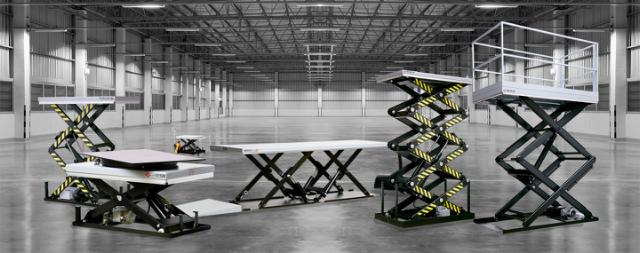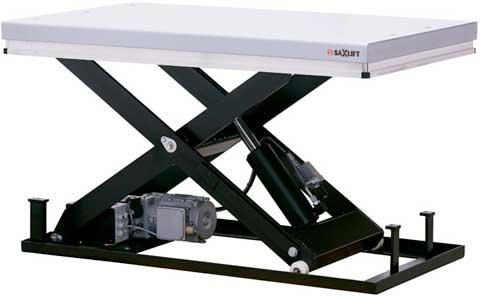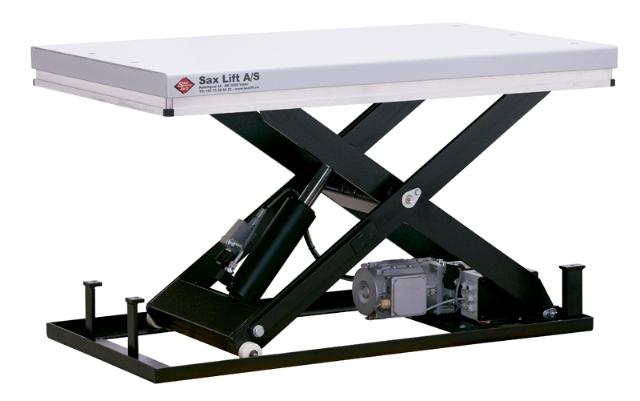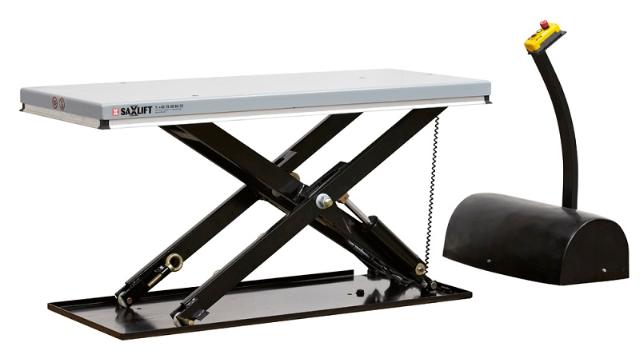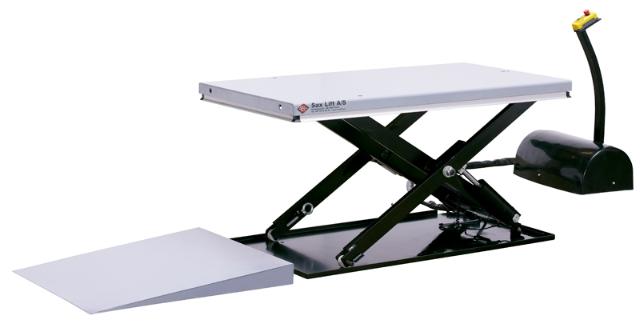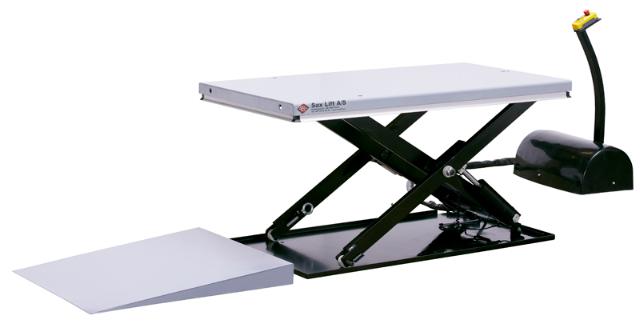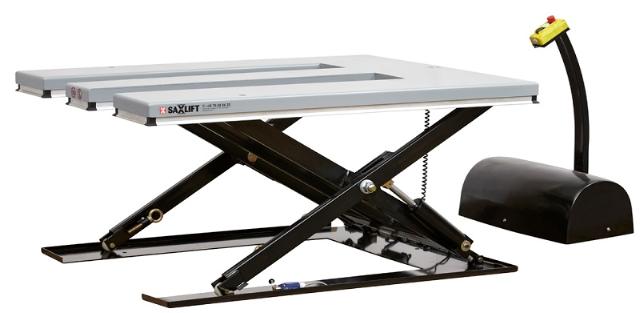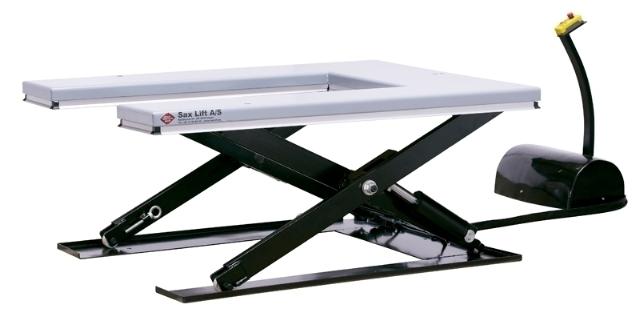230V Lift Tables
230v Electric Scissor Lift Tables - Enhance Your Lifting Solutions
When it comes to boosting operational efficiency in industrial settings, 230V electric scissor lift tables offer a significant advantage.
These versatile tools use electric lift technology combined with scissor mechanics to provide seamless lifting capabilities. The scissor mechanism, known for its stability, guarantees smooth operation and reliable support for heavy loads, making these tables essential for various applications.
With models like the ICB500-230V and IU600-230V, users can expect efficient lifting times, ranging from 23 to 24 seconds, and impressive load capacities up to 1000 kg.
The precision of 230V electric lifts enhances productivity by reducing manual labor and optimizing workflow. These lift tables, with their robust design and quick operation, are ideal for streamlining tasks in demanding environments.
What Are Electric Lift Tables?
Electric lift tables are essential tools that streamline lifting tasks by efficiently elevating heavy loads with minimal effort.
Available in a 230V configuration, these tables are particularly beneficial in industrial settings, offering quick lifting times and robust capacities.
Their versatility makes them ideal for various applications, especially in warehouses where they enhance productivity and safety.
Understanding Electric Scissor Lift Tables
Though often overlooked, electric scissor lift tables are essential in various industrial settings, offering a reliable solution for lifting heavy loads efficiently. These tables employ a scissor mechanism, powered by electricity, to raise and lower platforms, accommodating different heights and weights.
The electric lift advantages are numerous, including enhanced safety, ease of operation, and consistent performance, making them indispensable in warehouses, manufacturing plants, and assembly lines.
Regular scissor lift maintenance is vital to guarantee peak functionality and longevity. Maintenance involves inspecting hydraulic systems, checking electrical connections, and lubricating moving parts.
Benefits of Using 230v Electric Lift Tables
While often overlooked, 230V electric lift tables offer significant advantages in industrial settings. Their electric lift efficiency guarantees smooth operations, reducing manual labour and increasing productivity. With their robust design, these tables handle heavy loads effortlessly, enhancing workplace safety. Maintenance tips include regular inspection of electrical components and lubrication of moving parts to promote longevity and peak performance.
Here's a quick comparison of some key features:
| Model | Capacity (kg) | Lifting Time (sec) |
|---|---|---|
| ICB500-230V | 500 | 24 |
| IU600-230V | 600 | 23 |
| IL1000X-230V | 1000 | 27 |
| ICB1000-230V | 1000 | 23 |
| ICB1000B-230V | 1000 | 24 |
| IU1000-230V | 1000 | 23 |
These tables are ideal for environments where efficiency and reliability are paramount, making them an indispensable tool in various industrial applications.
Applications of Electric Scissor Lifts in Warehouses
In countless warehouses, scissor lifts are an essential component for efficiently handling materials and optimizing space.
These versatile machines enhance warehouse efficiency by utilizing advanced lifting technology to move heavy loads quickly and safely. Electric scissor lifts, such as the ICB500-230V and IU600-230V models, offer reliable solutions for elevating pallets and goods to desired heights without manual strain.
Their compact design allows them to navigate tight spaces, maximizing storage capacity. By streamlining operations, these lifts reduce downtime and improve productivity.
Additionally, they provide ergonomic benefits by minimizing the need for bending or reaching, which reduces the risk of workplace injuries.
How to Choose the Right Electric Lift Table?
Choosing the right electric lift table involves considering several key factors such as height requirements, weight capacity, and specific lifting needs.
Understanding how high items need to be lifted and ensuring the lift table can support the required weight are vital steps.
Factors to Consider When Purchasing Electric Scissor Lifts
Selecting an electric scissor lift requires careful consideration of several key factors to confirm it meets the user's specific needs.
One vital aspect is cost comparisons. Buyers should evaluate the price differences among models like the ICB500-230V, IU600-230V, and IL1000X-230V, making sure they balance budget constraints with necessary features.
Another important consideration is understanding maintenance tips. Regular maintenance guarantees longevity and peak performance, so potential buyers must assess the ease of maintaining each model. This includes checking for accessible parts and straightforward maintenance protocols.
Additionally, considering the lifting capacity specific to their tasks helps in choosing the right model.
Height Requirements for Lifting Heavy Items
Height is an essential factor when determining which electric lift table to choose for heavy lifting tasks.
It's important to take height clearance in the workspace into account to guarantee the table can operate without obstruction. The total height of the lift, such as the IL1000X-230V with a total height of 1040 mm, should match the specific needs of the task.
Lifting stability is another significant aspect, as a stable lift guarantees safety and efficiency when handling heavy items. Electric lift tables like the ICB500-230V, with a closed height of 85 mm, provide low-profile options for stability.
Choosing the right height helps maintain operational integrity, confirming the lift table performs effectively under the required conditions while accommodating different load heights.
Weight Capacity of Electric Lift Tables
Guaranteeing the lift table's total height meets workspace requirements is just part of the equation; understanding its weight capacity is equally important.
Weight specifications determine how much load an electric lift table can handle safely. For instance, Sax Lift offers tables with varying lifting capacities, such as the ICB500-230V with a capacity of 500 kg and the IL1000X-230V which can handle up to 1000 kg.
Selecting the right model involves matching the table's lifting capacity with the demands of the intended tasks. Overloading a lift table can lead to operational issues and safety risks, so it's vital to adhere to the stated weight specifications.
Knowing these limits guarantees peak performance and extends the equipment's lifespan.
What Are the Safety Features of Electric Scissor Lift Tables?
Electric scissor lift tables are equipped with essential safety mechanisms like overload protection and emergency stop buttons to guarantee reliable operation.
Adhering to best practices, such as regular maintenance checks and proper training for operators, further enhances safety during use.
Understanding these features and practices not only helps in preventing accidents but also prolongs the lifespan of the equipment.
Essential Safety Mechanisms in Electric Lifting Tables
While electric lifting tables provide efficiency and convenience in various industrial settings, it's important to take into account the essential safety mechanisms they possess to guarantee maximum functionality and operator safety.
Adhering to stringent safety standards is significant, ensuring that these tables are designed with robust safety locks and emergency stop buttons to prevent accidents.
Additionally, overload protection mechanisms are fundamental, safeguarding against weight capacity breaches. Regular lift table maintenance is necessary to keep these mechanisms in ideal working condition, preventing any potential malfunctions.
Anti-slip surfaces and guardrails add another layer of protection, minimizing the risk of slips or falls.
Best Practices for Operating Electric Scissor Lifts
Operating electric scissor lifts efficiently requires adherence to best practices that prioritize safety and functionality. Understanding operational guidelines and maintenance tips is essential for peak performance and longevity.
-
Regular Inspections: Before each use, inspect the lift for any visible damage or wear. This preventive measure guarantees safety and reduces downtime.
-
Load Capacity Awareness: Always adhere to the manufacturer's specified load capacity. Overloading can cause mechanical failure and pose serious safety risks.
-
Routine Maintenance: Implement a maintenance schedule to keep all parts well-lubricated and functioning smoothly.
Following maintenance tips, like checking hydraulic fluid levels and testing emergency stop functions, can prevent unexpected malfunctions.

